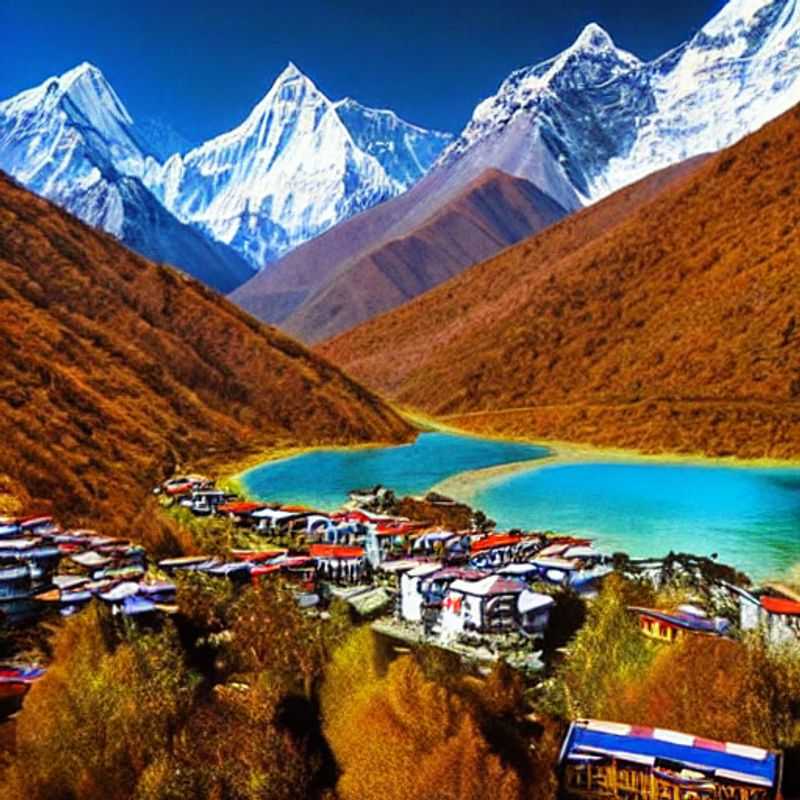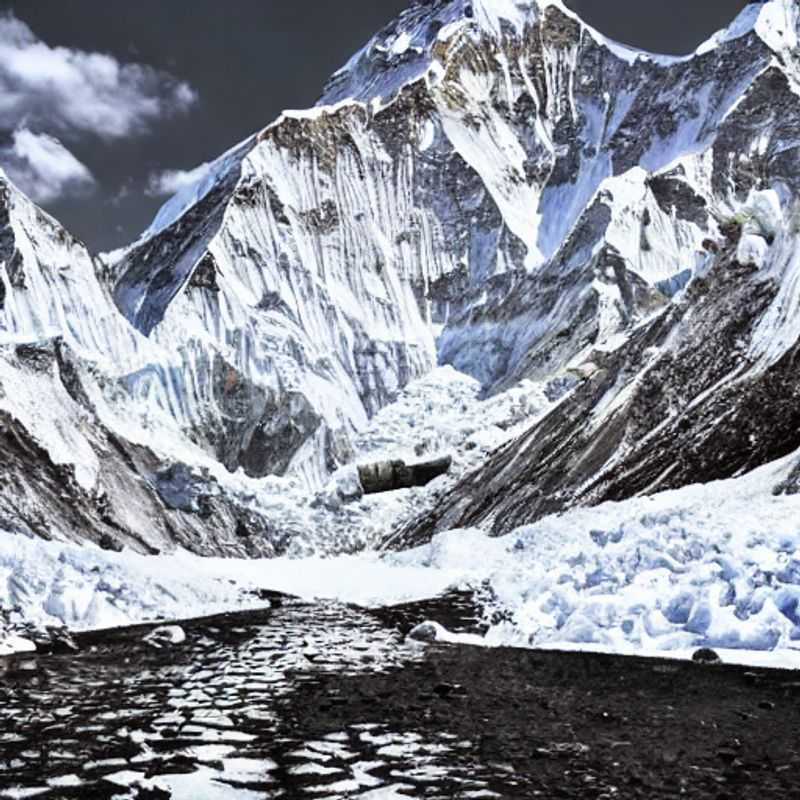Everest Base Camp in Summer? Top 3 Trekking Alternatives (and Why You Might Need a Plan B!)

Mount Everest Base Camp Trek 2026: Your Essential Safety Guide
Planning a trek to Mount Everest Base Camp in 2026 requires meticulous preparation, with safety being the paramount concern. This guide provides essential advice to ensure a rewarding and secure adventure in the majestic Himalayas.
One of the most critical aspects of safety is acclimatization. Altitude sickness, or Acute Mountain Sickness (AMS), is a serious risk. Hikers should ascend gradually, dedicating extra days for rest at intermediate villages like Namche Bazaar and Dingboche. Listen to your body; symptoms can include headaches, nausea, and dizziness. If AMS symptoms arise, do not ascend further and consider descending.
Physical fitness is another cornerstone of a safe trek. Begin a rigorous training regimen at least six months in advance, focusing on cardiovascular endurance and strength training, particularly for your legs and core. Consistent training will significantly reduce fatigue and the risk of injury.
Proper gear is non-negotiable. Invest in high-quality, waterproof, and windproof clothing, including layers for varying temperatures, sturdy hiking boots with good ankle support, and warm accessories like gloves, hats, and a scarf. A good sleeping bag rated for sub-zero temperatures is also vital. Don't forget sunglasses to protect your eyes from the intense sun at high altitudes.
Hydration and nutrition play a crucial role. Drink plenty of water, aiming for 4-5 liters per day, to combat dehydration and aid acclimatization. While on the trek, consume easily digestible, high-energy foods. Avoid alcohol and excessive caffeine, which can contribute to dehydration. Carry water purification tablets or a filter as a backup.
Choosing a reputable trekking agency and experienced guides is highly recommended. Local guides possess invaluable knowledge of the terrain, weather patterns, and emergency procedures. They can also assist with spotting early signs of altitude sickness and ensuring adherence to safe practices. Always travel with a guide or porter.
Emergency preparedness is key. Inform someone back home of your itinerary and expected return date. Carry a well-stocked first-aid kit, including medications for common ailments like headaches and stomach upset, as well as bandages and antiseptic wipes. Know the basic first-aid procedures for common trekking injuries.
Understanding the weather is also essential. Himalayan weather is notoriously unpredictable. Be prepared for sudden changes in temperature, snow, and wind. Your guide will be instrumental in monitoring weather conditions, but it's wise to be informed yourself. Flexibility in your itinerary is crucial to adapt to adverse weather.
Finally, be aware of your surroundings and respect the local culture. Stick to marked trails to avoid getting lost and to protect the fragile environment. Respecting local customs and traditions will enhance your experience and ensure positive interactions with the Sherpa community.

Is Everest Base Camp in Summer? A Digital Nomad's Data-Driven Verdict
Decoding the Autumn Ascent: Everest Base Camp Trek Weather Report
Autumn in the Himalayas: Seasonal Activities & Events You Won't Want to Miss
Everest Base Camp Trek: Crowd Control – Summer vs. Autumn
Altitude Adjustment: Budget Breakdown for Your Everest Base Camp Adventure
Trekking Everest's Trails: Attraction Opening Hours & Accessibility
Base Camp Bliss: Personal Preferences & The Autumn Advantage
Conquering Everest (and Your Budget): A Cost-Benefit Analysis for Autumn Trekking
Namaste fellow eco-travelers! Planning a solo autumn Everest Base Camp trek? Let's dive into the digital Sherpa guide, blending adventure, data, and a dash of myth-busting. Autumn (September-November) in Nepal offers a sweet spot: crisp, clear skies, fewer crowds than spring, and vibrant landscapes. Think golden hues painting the Himalayas, a stark contrast to the snow-capped peaks. The weather is generally sunny and mild during the day, with cool nights, making it perfect for trekking.
Seasonal activities are primarily focused around trekking. You’ll find fewer organized group treks, allowing for a more solitary and immersive experience. Expect fewer tea houses open in the higher altitudes compared to peak seasons. Crowd levels are significantly lower than in spring, making for a more peaceful and less congested trek. This solitude will amplify the spiritual essence of your journey. The silence, broken only by the wind whispering through the prayer flags, truly brings you closer to nature.
Flights to Kathmandu are generally cheaper during the autumn shoulder season. Expect to pay anywhere from $600-$1200 round-trip depending on your origin and booking time. Accommodation costs vary, ranging from budget-friendly tea houses along the trek ($10-$30 per night) to more comfortable lodges in Kathmandu ($30-$80 per night). The cost of the trek itself depends on whether you choose to go with a guided tour or independently.
Most attractions in Kathmandu and surrounding areas maintain regular opening hours year-round, although some smaller museums or sites might have reduced hours in the shoulder season. Opening times are typically from 9 am to 5 pm, but it's best to double-check specific locations. The accessibility of outdoor spaces is excellent during autumn. The trails are generally clear, although some higher altitude passes might have patches of early snow.
Autumn trekking offers unparalleled views and a unique experience due to the less crowded trails. The air is crisp, the colors vibrant, and the silence profound. If you're an eco-tourist, the tranquility will truly resonate. Consider your own personal comfort level with cooler temperatures and possible early snow at higher altitudes. This trek requires a good level of physical fitness.
Budget-wise, expect a variable cost. A basic, self-guided trek with minimal luxuries could cost around $1000-$1500, excluding flights. This covers permits, tea houses, food, and basic gear. A guided trek with porter support will significantly increase the cost, potentially reaching $2500-$4000 or more, depending on the level of service and the number of days trekking. Food costs along the trek vary from $10-$20 a day. A typical Nepali meal might include dal bhat (lentil soup and rice), momos (dumplings), and various curries.
Local traditions during autumn include various festivals celebrated in different villages along the trekking route. You'll find yourself surrounded by prayer flags, chanting monks, and the ever-present aroma of incense, adding layers to your trek. The locals are generally friendly and welcoming, especially to trekkers, eager to share their culture and their awe-inspiring mountains. Expect to encounter a diverse mix of trekkers, ranging from seasoned adventurers to first-timers. The music you might hear varies from traditional Nepali folk tunes to the hushed chatter of fellow hikers. The sound of prayer bells might ring through the valleys, intertwining with the natural sounds of the wind and wildlife.
Popular plants along the trek include rhododendrons (national flower of Nepal), various types of pine and juniper trees. Dogs and yaks are common animals, often used as pack animals by locals. Kathmandu's architecture is a fascinating blend of ancient and modern styles, blending pagoda-roofed temples with modern high-rises. Expect a total cost for a solo, budget-conscious trek, including flights and accommodation of approximately $1600-$2200. A guided and more luxurious trek could reach $3500-$5000 or even higher. Remember to factor in travel insurance and personal spending money.
Remember to plan your trek carefully, research permits, and pack appropriate gear. Enjoy the journey!
,